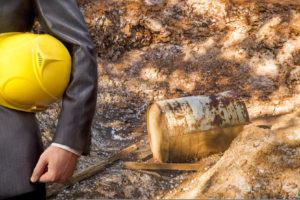
With the Corporation Tax main rate on company profits of more than £250,000 set to increase to 25 per cent in April 2023, businesses will be keener than ever to identify ways to claim relief on their activities.
Land Remediation Relief (LRR) is one such route. Available to any limited company that owns or holds a lease over seven years on land or property – including property investors, developers or owner occupiers – the relief is designed to encourage the clean-up or remediation of contaminated sites and bringing long-term derelict land back into use to prevent future harm. Companies can claim tax relief of 150% on qualifying expenditure incurred by cleaning up land that is deemed to be in a contaminated state.
What is contaminated land?
Land is classed as contaminated when:
- It is causing relevant harm
- There is a serious possibility it could cause relevant harm
- It is causing, or there is a possibility it could cause, significant pollution in ground water, streams, rivers or coastal waters
- Pollution is occurring naturally, through the likes of radon, arsenic or Japanese knotweed
‘Relevant harm’ refers to contamination that could have a significant adverse impact on humans or animals, or cause damage to buildings, and which has a real impact on the way they can be used.
How does land become contaminated?
Land contamination must be present because of industrial activity, such as:
- Mining or quarrying
- Manufacturing
- Supply of gas, electric or water
- Construction
However, the site itself doesn’t necessarily need to have been used for industrial activity. For example, removal or containment of asbestos from a former shop or restaurant can be claimed for if the issue was present due to the construction of the physical building.
What counts as qualifying LRR expenditure?
Qualifying expenditure includes the cost of establishing the level of contamination or removing or containing the contamination so that it cannot cause relevant harm.
Qualifying costs include:
- Staffing costs through PAYE – for things such as site assessments or removal of contamination
- Materials used that are over and above standard issued items, because of the contamination present – e.g. more secure site fencing than would ordinarily be necessary
- Sub-contractor costs and professional fees – e.g. any third party who have been paid to establish levels of contamination or form part of the remediation strategy to remove/contain the contamination
To be eligible for the relief, companies that make a claim cannot themselves be the polluter of the land and they must not have any direct commercial relationship with the polluter. They also must carry out the remediation of the land; it isn’t enough to establish the level of contamination but then not remediate it.
How long after a clean-up project can LRR be claimed?
Typically, the time limit for retrospective claims is within two years of the end of the accounting period in which the expenditure has occurred.
However, this may change where a business carries ‘Work in Progress’ on its balance sheet, as LRR must always follow the accounting treatment of expenditure. LRR can only be claimed against expenditure which has been released to the profit and loss account in an accounting period.
How is the relief calculated?
How much relief can be claimed depends on whether a company’s spend is ‘capital’ or ‘revenue’ in nature.
The value of relief can also depend on whether the company has a taxable profit or loss position.
If the expenditure is revenue in nature, the company can take a further 50% enhancement on the expenditure incurred when calculating its taxable profits.
If the expenditure is capital in nature, the company has the option to deem the expenditure as revenue expenditure, therefore allowing a 100% deduction plus the additional 50% enhancement, giving total tax relief on 150% of the capital costs; which can be extremely valuable.
Equally as valuable in some cases is the way in which tax credits can be claimed on LRR expenditure when a company is in a taxable loss position. Subject to certain conditions, HMRC allows the company to surrender the taxable loss for a repayable tax credit equal to 16%.
How we can help
Here at Champion Accountants, we have extensive experience in supporting clients throughout the LRR claim process, and our expert LRR advisors are on hand to identify all qualifying expenditure to ensure claims are fully substantiated.
To find out if your land remediation activities qualify for tax relief, contact Martin Frain on 0161 703 2500 or martin.frain@championgroup.co.uk.

